On to the final sixÖ
13th hole Ė 385 yard par 4
My favorite stretch at Picadome kicks off with a shortish but uphill par 4. The tee shot plays over one of several natural sinkholes on the course (the geology department at the nearby University of Kentucky often brings students to the course to study the unique properties of its limestone-based soil). Itís mostly blind to a fairly narrow and slightly offset fairway. Another hole where some tree clearing might make things a bit more interesting.
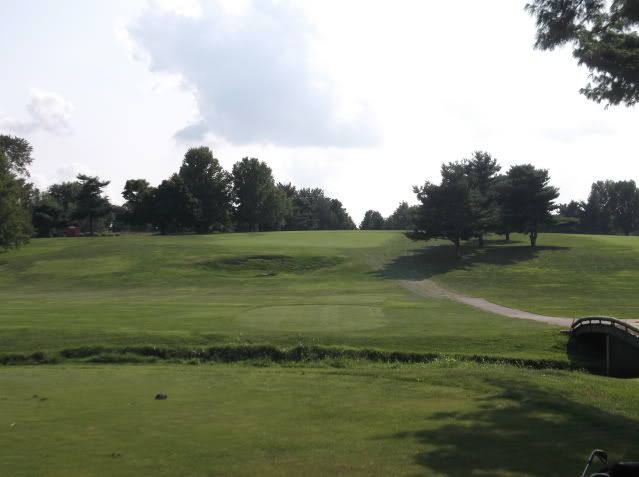
The approach is dictated by an almost road hole-ish bunker in front of the green, which features a subtle spine through its middle. While nothing too eye-catching, itís a green complex that tends to create varied recovery shots as itís small and seems to play a bit firmer than most.
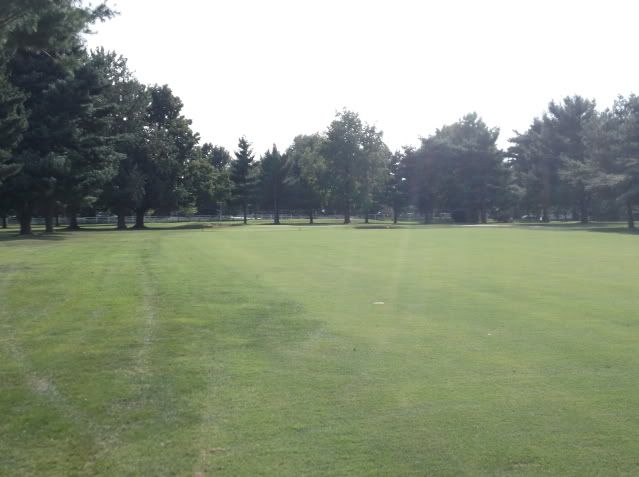
14th hole Ė 440 yard par 4
One of my favorites at Picadome is a long and tough par 4. While not a particularly compelling hole in terms of playing angles, it uses its terrain very well. The tee shot plays mostly blind to a downhill fairway with a huge dropoff around the 300 yard mark. A big drive that reaches the bottom of the downslope gets a huge advantage on this hole, but one that hangs on the downslope has an extremely difficult approach.
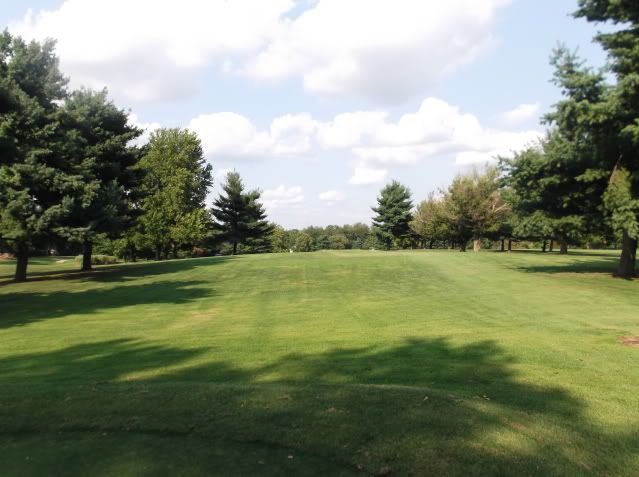
From the fairway, things open up significantly and the sometimes claustrophobic feel of Picadome is replaced by a pleasing open view to a green tucked behind a stream with a huge ridge running through its middle that is evident even in this photo from 170 yards away. Probably the most difficult approach on the course.
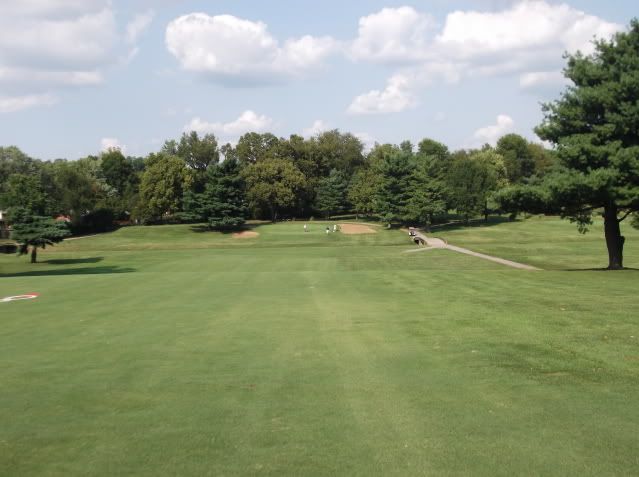
Again, while the hole doesnít have particularly interesting angles, it has fantastic terrain and perhaps the best green on the course. A shot from the 15th tee looking back isnít the best, but it attempts to show the huge ridge running through the middle of the green separating it into two very distinct tiers.

15th hole Ė 185 yard par 3
In my experience, 15 is probably the worst par 3 on the course but also the most difficult. Not a bad hole, but the green is partially blocked by a tree right which creates a bit of a ďdouble hazardĒ with the bunker. The turf suffers from the encroaching tees. Lurking underneath, though, is a very interesting green complex that could present a lot of cool recovery options if some of the trees didnít restrict whatís available.

16th hole Ė 365 yard par 4
One of the coolest holes on the course in terms of playing angles, staggered bunkers dictate the goal of the tee shot. The short bunker right is easily carried but a ball slightly pushed risks OB. The longer bunker left is probably about 240 off the tee and any ball hit in that direction must be laid up and will give an obscured approach.
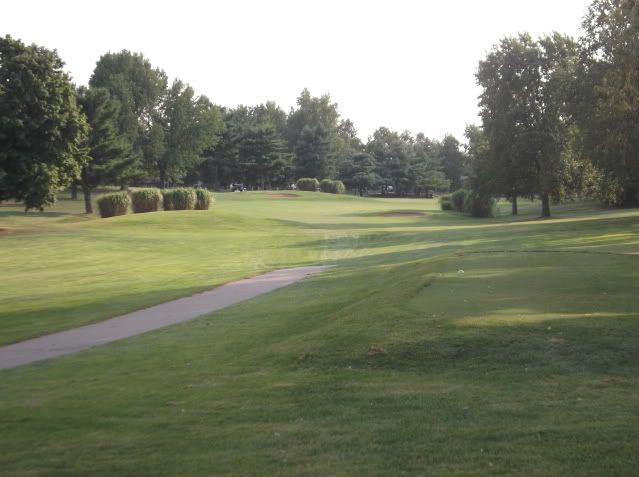
The approach shot is to a small green that slopes fiercely back-to-front and is tucked into a bit of a natural amphitheater. Itís a wonderful green setting although, again, the trees surrounding stifle the turf a bit.

17th hole Ė 517 yard par 5
Picadome closes with back-to-back par fives. The 17th is pretty tight off the tee but plays shorter than its yardage thanks to a dogleg and a downhill tee shot. A solidly hit drive in the fairway leaves a mid-long iron into the green, but missing the fairway puts par in jeopardy.
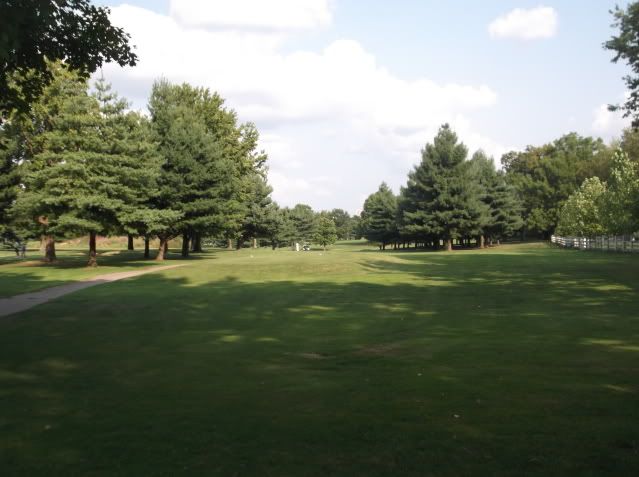
The approach plays uphill to a FANTASTIC green complex. Mounds reminiscent of the 8th at Augusta guard the green and make going at the green in two a risky play and make laying up a reasonable option. Thereís just a ton going on around the green and thousands of short game options available. I shouldíve gotten a photo of it.

18th hole Ė 531 yard par 5
Another reachable but treacherous par 5 closes the course. The tee shot plays out over another rise before moving significantly downhill. A solidly hit drive can catch the downslope and gain anywhere between 5 and 50 yards.

From about 170 yards, the approach is over a stream to a push-up green. Players going for the green in two hit from considerably farther back and often off a downhill lie, which brings the stream and all the falloffs and bunkering around the green into play.
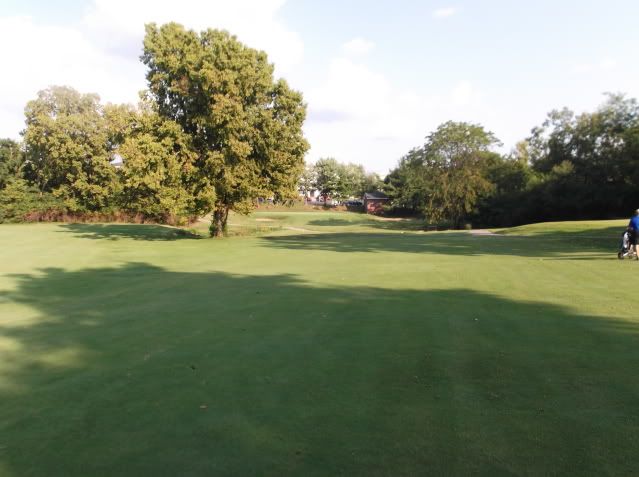
Is Picadome a must-play course? Probably not. In its current form, itís probably just an above-average track in very good condition and a fantastic value. But it stands out to me as a course whose bones are wonderful. Thereís a ton of interest around the small green complexes, tons of subtle risk/reward shots, and tons of places where the architecture just works. Itís a referendum in subtle course design and getting the most out of a routing.
Would it benefit from some tree clearing? Absolutely, and in many cases it would probably need to be fairly significant to recapture some of the strategic interest and recovery options. But make no mistake, thereís a fantastic, sporty course underneath some of the constrained playing corridors and green complexes, and even without a renovation/restoration (which will probably never come), itís still a wonderfully fun and interesting golf course that has a lot to offer both the casual player as well as the architecture fan who wants to see something unique. In my own mind, itís the most interesting design in Lexington and one of the top five public courses in the thirty mile area around Lexington. To me, it doesnít get nearly the credit it deserves.